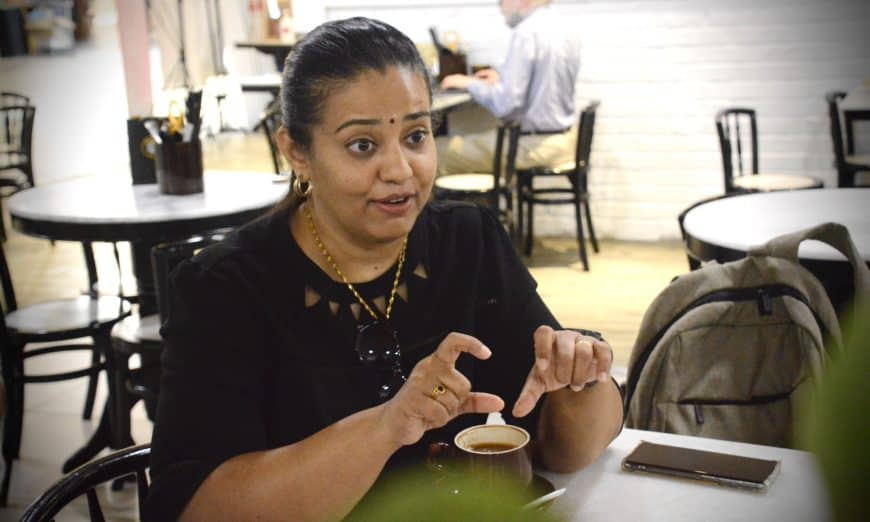WILL longer maternity and paternity leave disrupt work efficiency?
Founder and chief executive officer of STRAVIK, a business optimisation and transformation firm, Dr Vimaleswari K. Ramasamy replied with a ‘No’.
Dr Vimaleswari, fondly known as Dr Vimi, said many organisations are concerned that work efficiency might be disrupted when they offer longer maternity and paternity leave.
“However, that is not the case. The initiative can be implemented, a win-win situation can be achieved, and productivity can also increase when it is executed effectively,” said the former managing director (Malaysia Operations) of a global information services provider.
Back then, Dr Vimi led the company, a global organisation that provides information and analysis for more than 85% of the companies in the Global Fortune 500 list comprising key players in aerospace, defence and security, technology and more. According to her LinkedIn profile, she also led the Data Platform Strategy for the Global Technology Business Line, to build a comprehensive vision and actionable foundation to maximize the harnessing of data-related and data-dependent capability.
“The maternity care in Europe is great. And sometime in 2018, we adopted a six-month maternity leave and one-month paternity leave practice. And I trust that it is still being practised in that company now.
“On top of that, the company also allows flexibility for the staff (mother or father) to choose when they want to take maternity or paternity leave.
“For example, a staffer could be seven months pregnant, and she may want to opt for working half-day or part-time as it could be too tiring for her to do her work full-time. We allow her to start using her six-month maternity leave.
“New mothers who have just delivered can take their two to three months of maternity leave, followed by taking half-day maternity leave according to their need. They need not take a full six-month maternity leave in one go.
“In other words, we allow them to ‘break and stretch’ their maternity leave longer to about a year.
“We also allow fathers to ‘break and stretch’ their one-month paternity leave,” Dr Vimi recalled the maternity and paternity leave practice in her former company.

She said that babies are vulnerable to health conditions at that young age, and they needed special care.
“Parents will need to bring their baby for vaccination, medical check-up, or the baby may have teething problem. So, that was why we allowed the parents to have the flexibility to use their maternity and paternity leave.
“Caring for children should not always fall on women. Many women say that men are not helping. But I believe that it is not that men are not willing to help. It is just a matter of a communication gap. We just have to close the gap.
“We encouraged the fathers to also take care of their children, therefore, we emphasised for men to get the one-month paternity leave,” she said.
Win-win solutions
Dr Vimi said that things could be sorted out systematically and through strategies.
“The main concern is how to keep the operations running and support the staff who are on maternity or paternity leave.
“Firstly, we give opportunities to staff from other departments to fill in for the person who is on maternity or paternity leave. We offer to those who want to expand their knowledge and try a different experience. We either give them additional hours or overtime.
“Many of these such as mobilising resources involve planning. Some people love to try out new experiences, especially the younger generation. So, we approached and mobilised them.
“The process is only about understanding the organisation, mapping out what is required and filling in the people.
“An effective organisation can manage a burst capacity to a certain extent because it cannot ensure that everyone is going to work all the time.
“There will be emergency cases such as maternity, paternity, death in the family, or others. Therefore, fluctuating resources are necessary and if the organisation can do them right, it should be able to support that half-day flexibility for staff who are taking maternity and paternity leave,” Dr Vimi said.

She added that the company also engaged experienced people externally for support.
“Work that can be automated or non-confidential, can be offered to staff from other departments. But we manage confidential jobs internally.
“The maternity leave, paternity leave, flexibility and opportunity for staff to learn different experiences were a win-win situation. We saw a clear development in certain people. The staff got motivated and excited to work in the company,” she said, adding that people are willing to go the extra mile for the company when they are motivated.
She said her father was her inspiration and hero.
“I have seen my father taking part in social services since I was very young. I have seen him bringing people together towards a common goal.
“He taught me the importance of working with people; to win as a team and not as an individual,” she said.
Dr Vimi said her former company also had a good talent mix of 54% women and 46% men.
“We had a good mix in terms of ethnicity, locals and foreign. It is good to have diversity as we can have various good ideas which will contribute more to the growth of the company,” she added.
Story by Christopher Tan
Pix by Law Suun Ting, Siew Chia En and courtesy of Dr Vimi

